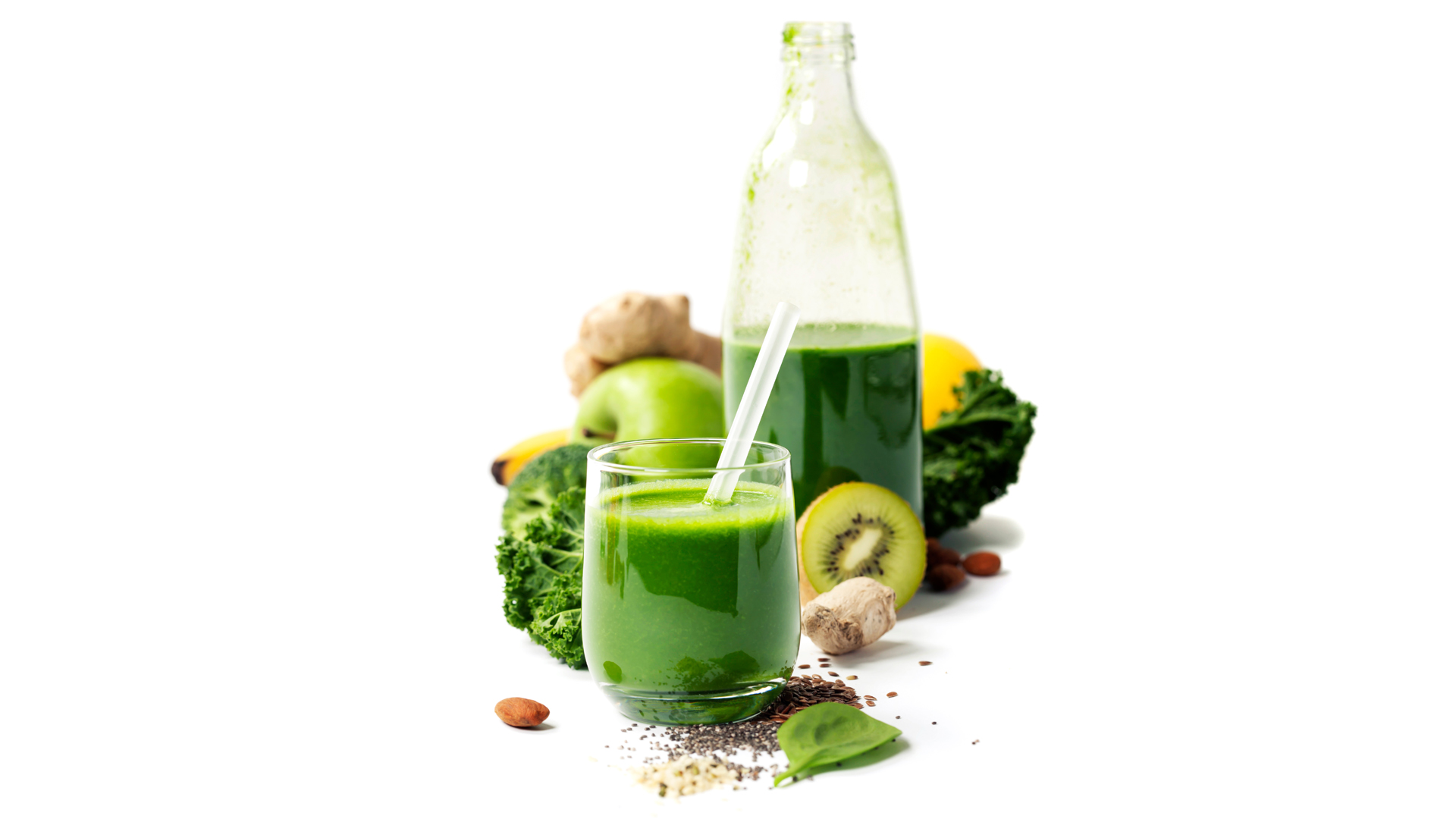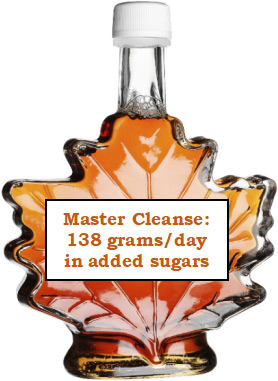Liquid Diets and Fads: What is the Evidence?
Diet is known to be one of the key risk factors for some systemic diseases as well for oral disease, including dental caries and dental erosion. Typical Western diets include high intake of added sugars and other fermentable carbohydrates.1Centers for Disease Control and Prevention. Get the Facts: Added Sugars. https://www.cdc.gov/nutrition/data-statistics/added-sugars.html?msclkid=8031d183ae2911ec9a96015f6a319433. The amount and frequency of consumption of fermentable carbohydrates is a key risk factor for dental caries, with higher amounts and more frequent intake associated with more frequent and prolonged drops in pH that encourage demineralization of tooth structure and inhibit remineralization.2Featherstone JD. Dental caries: a dynamic disease process. Aust Dent J 2008;53(3):286-91. doi: 10.1111/j.1834-7819.2008.00064.x. For dental erosion, intrinsic and extrinsic acids promote the demineralization of tooth structure over time.3Mahoney EK, Kilpatrick NM. Dental erosion: part 1. Aetiology and prevalence of dental erosion. N Z Dent J 2003;99(2):33-41. Acidic foods, drinks and snacks are sources of extrinsic acids. Well-recognized examples include pickles, citrus fruits, sodas, diet sodas, and alcoholic beverages such as wine and beer.4Søvik JB, Skudutyte-Rysstad R, Tveit AB et al. Sour sweets and acidic beverage consumption are risk indicators for dental erosion. Caries Res 2015;49(3):243-50. doi: 10.1159/000371896. Dietary habits also influence the occurrence of GERD, a source of intrinsic acid (gastric acid). Fad diets can also negatively impact both oral and systemic health.
Diets and Fads
A ‘fad’ is defined as a practice or interest followed for a time with exaggerated zeal.5Merriam Webster Dictionary. https://www.merriam-webster.com/dictionary/fad?msclkid=ae6687aaaae111eca2b50ae86228eb82. Other words used to describe this include a ‘craze’ or ‘rage’ (as in ‘all the rage’). The definition of dietary fads varies, frequently referring to diets that purport to offer rapid weight loss by limiting caloric intake or limit/promote intake of specific food types.6British Dietetic Association. Fad diets: Food Fact Sheet. Dec. 2021. https://www.bda.uk.com/resource/fad-diets.html. Dietary fads give the appearance of offering rapid, but not instant, gratification. Other dietary fads purport to offer health benefits other than rapid weight loss. Individuals typically believe the dietary fad they are on is health-giving or at least not negative for health. Contrary to popular belief, fad diets are not a recent phenomenon. In this article, we will look at recent liquid diets, and their potential impact on oral health.
Juicing and Juice Cleanses
Juicing is a process whereby the liquid is extracted from fruits and/or vegetables and insoluble fiber removed, producing a juice drink.7Mayo Clinic. Nutrition and Healthy Eating. Is juicing healthier than eating whole fruits or vegetables? https://www.mayoclinic.org/healthy-lifestyle/nutrition-and-healthy-eating/expert-answers/juicing/faq-20058020?msclkid=3c68f5c7ad2411ec9fe97a12efb52122. Individuals may consume juices only once a day.8Juicing. A Beginner’s Guide to Juicing. https://juicerecipes.com/juicing/?msclkid=0303d9eead4411ecaa8cd1154608ff1c. However, juice cleanses are fad diets where only juiced fruits and vegetables are consumed, and no solid food. Depending on the source, these diets might be recommended for 3 to 7 days or up to 21 days.9Joy of Juicing, Juice Fasting. 3 to 7-Day Detox/Juice Cleanse – what to Expect Before, During and After. Updated Oct 2, 2018. https://juicing-for-health.com/3-7-day-detox-juice-cleanse. They are claimed to detoxify the body and to potentially help with chronic conditions. It has been stated that juicing may aid with digestion, reduce the risk of cancer, increase energy, and help to boost the immune system.7Mayo Clinic. Nutrition and Healthy Eating. Is juicing healthier than eating whole fruits or vegetables? https://www.mayoclinic.org/healthy-lifestyle/nutrition-and-healthy-eating/expert-answers/juicing/faq-20058020?msclkid=3c68f5c7ad2411ec9fe97a12efb52122. ,8Juicing. A Beginner’s Guide to Juicing. https://juicerecipes.com/juicing/?msclkid=0303d9eead4411ecaa8cd1154608ff1c. Nonetheless, scientific evidence of any benefit over and above the benefit derived from eating fruits and vegetables themselves is lacking.7Mayo Clinic. Nutrition and Healthy Eating. Is juicing healthier than eating whole fruits or vegetables? https://www.mayoclinic.org/healthy-lifestyle/nutrition-and-healthy-eating/expert-answers/juicing/faq-20058020?msclkid=3c68f5c7ad2411ec9fe97a12efb52122. Rapid weight loss is also a claim, which is true but mostly water.9Joy of Juicing, Juice Fasting. 3 to 7-Day Detox/Juice Cleanse – what to Expect Before, During and After. Updated Oct 2, 2018. https://juicing-for-health.com/3-7-day-detox-juice-cleanse.
Whether or not a juice has potential as a risk factor for dental caries and/or dental erosion – and to what extent - is going to depend on the mix of ingredients of a particular juice, the amount and frequency of consumption, and whether consumed quickly, through a straw, or sipped over extended periods of time. In reviewing juicing recipes, many contain oranges, lemon and/or lime juice, as well as apple juice which is also acidic.9Joy of Juicing, Juice Fasting. 3 to 7-Day Detox/Juice Cleanse – what to Expect Before, During and After. Updated Oct 2, 2018. https://juicing-for-health.com/3-7-day-detox-juice-cleanse. Fruits also contain sugars. While the pH of vegetables is generally higher than for fruits typically included in juicing, some vegetable juicing includes citrus juices, and tomatoes (botanically a fruit, but popularly considered a vegetable) are acidic with a pH ranging from 4.3 to 4.9.10TechieScientist. pH of Tomato — Acidic or Alkaline? https://techiescientist.com/ph-of-tomato/. ,11Master List of Typical pH and Acid Content of Fruits and Vegetables for Home Canning and Preserving. https://pickyourown.org/ph_of_fruits_and_vegetables_list.htm?msclkid=69f8008cad4811ecb72b3193fb5a032e. ,12pH of Vegetables and Low-Acid Fruits - Master List. https://pickyourown.org/pH-low-acid-vegetables-and-fruits.php. Table 1 contains a list of fruits and vegetables often found in recipes for juicing and their pH.
Table 1. Fruits and vegetables, juicing recipes, and pH13pH of Fresh Fruits – Master List. https://pickyourown.org/pH-of-fresh-fruits.php.
| Fruit | Range of pH |
|---|---|
| Apples | 3.3 to 4.0 |
| Blueberries | 3.85 to 4.5 |
| Grapefruit | 3.0 to 3.75 |
| Lemons | 2.0 to 3.0 |
| Limes | 2.0 to 2.8 |
| Oranges | 3.69 to 4.34 |
| Pears | 3.4 to 4.6 |
| Pineapple | 3.2 to 4.0 |
| Strawberries | 3.32 to 3.5 |
| Vegetable | Range of pH |
| Beetroot | 5.32 to 5.56 |
| Carrots | 5.3 to 5.56 |
| Celery | 5.7 to 6.0 |
| Fennel | 5.48 to 5.88 |
| Parsley | 5.7 to 6.0 |
| Spinach | 5.38 to 6.8 |
| Tomatoes | 4.3 to 4.9 |
In addition to juicing and juice cleanses, one diet trend for weight loss that surfaced in the last decade among young females was ‘cotton ball juicing’ which involved soaking cotton balls in juice, then chewing and swallowing them.14Goldie M. A dangerous new fad. DentistryIQ, Jan 3, 2014. https://www.dentistryiq.com/dental-hygiene/clinical-hygiene/article/16359698/a-dangerous-new-fad?msclkid=a2a2314ba88b11ec8fcb477d495fcc4d. This fad is of serious concern, with swallowed cotton balls resulting in a large and indigestible mass in the stomach, known as a bezoar, which can cause intestinal blockage.
Lemonade/Master Cleanse Diet
The lemonade/master cleanse diet is intended to provide rapid weight loss and is a variation of a juice cleanse. It centers on consumption of a lemonade containing maple syrup and cayenne pepper six times daily, as well as intake of tea and salt water, for a minimum of 10 days during which no solid food is consumed.15Healthline. Master Cleanse (Lemonade) Diet: Does It Work for Weight Loss? https://www.healthline.com/nutrition/master-cleanse-lemonade-diet?msclkid=9b275162ad4b11ec91c510fa63481d35#what-to-eat. This fad diet is purported to offer increased energy and detoxification, while evidence-based science is lacking. The lemonade is acidic and maple syrup contains sugar. In addition, nutritional needs are not met. Current advice on healthy nutrition recommends a maximum of 5% of recommended daily calories being sourced from added sugars (25 g). However, the daily intake during a lemonade/master cleanse diet is more than five times this at 138 grams, and, with a lower caloric intake.15Healthline. Master Cleanse (Lemonade) Diet: Does It Work for Weight Loss? https://www.healthline.com/nutrition/master-cleanse-lemonade-diet?msclkid=9b275162ad4b11ec91c510fa63481d35#what-to-eat. (Figure 1)
Apple Cider Vinegar
Apple cider vinegar is used in everyday life in salads and cooking. It is also used as a drink for weight loss and other potential health benefits such as lowering blood glucose levels, aiding digestion and calming GERD, and as a source of antioxidants.16Simon S. Are new diet fads wrecking teeth? Br Dent Assoc; April 3, 2018. https://www.bda.org/news-centre/blog/are-new-diet-fads-wrecking-teeth?msclkid=ab53568ba88911ec83bb2386320f7b15. ,17Cleveland Clinic. Nutrition. Exploring the Health Benefits of Apple Cider Vinegar, April 30, 2021. https://health.clevelandclinic.org/exploring-the-health-benefits-of-apple-cider-vinegar/?msclkid=76382f0caddf11ecb2b2beb0fadbe3f7. It has also been recommended to add it to a cup of tea or as ‘shots’ of apple cider vinegar.16Simon S. Are new diet fads wrecking teeth? Br Dent Assoc; April 3, 2018. https://www.bda.org/news-centre/blog/are-new-diet-fads-wrecking-teeth?msclkid=ab53568ba88911ec83bb2386320f7b15. ,17Cleveland Clinic. Nutrition. Exploring the Health Benefits of Apple Cider Vinegar, April 30, 2021. https://health.clevelandclinic.org/exploring-the-health-benefits-of-apple-cider-vinegar/?msclkid=76382f0caddf11ecb2b2beb0fadbe3f7. However, there is no evidence base to support claims of calming GERD, no robust studies supporting weight loss or lowering of blood glucose levels, and no health claims can be made for apple cider vinegar.17Cleveland Clinic. Nutrition. Exploring the Health Benefits of Apple Cider Vinegar, April 30, 2021. https://health.clevelandclinic.org/exploring-the-health-benefits-of-apple-cider-vinegar/?msclkid=76382f0caddf11ecb2b2beb0fadbe3f7. At the same time, the low pH of apple cider vinegar can increase risk for dental erosion, with this varying depending on concentration, and there is potential for damage to the esophageal mucosa if swallowed neat as a drink.17Cleveland Clinic. Nutrition. Exploring the Health Benefits of Apple Cider Vinegar, April 30, 2021. https://health.clevelandclinic.org/exploring-the-health-benefits-of-apple-cider-vinegar/?msclkid=76382f0caddf11ecb2b2beb0fadbe3f7.
Figure 2. Kombucha after weeks of fermentation
Source: B. Appel, Wikimedia commons.
https://commons.wikimedia.org/wiki/File:Kombucha.jpg
Kombucha
Kombucha is thought to have its origins in China during the Qin dynasty more than two thousand years ago, and to have later been introduced firstly to Japan, however its exact origins are unclear.18Zhang L. The Cloudy Origins of Kombucha From Folk Medicine to Pop-Culture Potion. Smithsonian Center for Folklife and Cultural Heritage. https://folklife.si.edu/magazine/cloudy-origins-of-kombucha?msclkid=63279cb3ad1111ecac4f2b98a7b3a1ad. Kits are available to make your own kombucha, and kombucha is also now widely available commercially in stores as kombucha itself as well as being incorporated as an ingredient in some lemonades and other soft drinks. By 2017, kombucha was reported to be a USD 1.5 billion market. Kombucha is produced using sugared tea and a symbiotic culture of bacteria and yeasts (SCOBY) which results in fermentation.19Kombucha. https://en.wikipedia.org/wiki/Kombucha?msclkid=ec522fadad1411ecaee951477a89ad49. (Figure 2) The exact mix of bacteria and yeasts in kombucha varies, and includes bacteria that produce acids, including acetic acids. The alcohol content of kombucha is <0.5%, while it is also now available in beer and wine, and as ‘hard kombucha’ with a higher alcohol content (5%). In addition, the components of kombucha vary greatly.20Martínez-Leal J, Ponce-García N, Escalante-Aburto A. Recent Evidence of the Beneficial Effects Associated with Glucuronic Acid Contained in Kombucha Beverages. Curr Nutr Rep 2020;9(3):163-170. doi: 10.1007/s13668-020-00312-6.
Kombucha is claimed to be a ‘functional beverage’ that is health-giving. Claims have also been made that it boosts the immune system and helps to prevent cancers and cardiovascular diseases.21Markey C. Popular Social Media Diet Trends – From the Benign to the Barbaric. U.S. News, August 12, 2021. https://health.usnews.com/health-news/blogs/eat-run/articles/popular-and-dangerous-social-media-diet-trends?msclkid=6aecb193ad1711ecacdf6a996acbbcbd. ,22Chakravorty S, Bhattacharya S, Bhattacharya D et al. Kombucha: A Promising Functional Beverage Prepared From Tea, Eds): Alexandru Mihai Grumezescu, Alina Maria Holban. Non-Alcoholic Beverages, Woodhead Publishing, 2019:285-327. https://doi.org/10.1016/B978-0-12-815270-6.00010-4. However, in a systematic review using a wide range of data sources, it was concluded that health claims are not supported by available data.23Ernst E. Kombucha: a systematic review of the clinical evidence. 2003. In: Database of Abstracts of Reviews of Effects (DARE): Quality-assessed Reviews [Internet]. York (UK): Centre for Reviews and Dissemination (UK); 1995-. https://www.ncbi.nlm.nih.gov/books/NBK69654/. In a more recent systematic review conducted in 2018, over three hundred articles were reviewed with only one reporting on human subjects with empirical data and no clinical trials.24Kapp JM, Sumner W. Kombucha: a systematic review of the empirical evidence of human health benefit. Ann Epidemiol 2019;30:66-70. doi: 10.1016/j.annepidem.2018.11.001. It was concluded that clinical trials were essential to investigate claims of health benefits. Kombucha itself is acidic, typically with a pH of 3.5.19Kombucha. https://en.wikipedia.org/wiki/Kombucha?msclkid=ec522fadad1411ecaee951477a89ad49. Repeated consumption of kombucha carries with it a risk for dental erosion and tooth wear, again with the risk depending on frequency and amount of intake and how it is consumed. It should also be noted that for drinks containing kombucha, such as some lemonades, the pH is going to depend on the mix of ingredients in that drink and not only on the pH of kombucha itself.
Other Considerations
Dietary fads include both liquid and solid food restrictive diets. Ongoing restrictive fad diets can result in poor nutrition and deficiencies in key nutrients such as vitamins, calcium, and protein, as well as reduced intake of fiber. Information on oral manifestations of ongoing poor nutrition can be found on the Academy of General Dentistry website.25Pflipsen M, Zenchenko Y, Nutrition for oral health and oral manifestations of poor nutrition and unhealthy habits. Gen Dent Nov/Dec 2017:36-43. https://agd.org/docs/default-source/self-instruction-(gendent)/gendent_nd17_aafp_pflipsen.pdf. As discussed in this article, apple cider vinegar and kombucha are not consumed instead of other foods/drinks but in addition to these, which would not result in such deficiencies. However, for restrictive liquid/solid food fad diets, deficiencies can occur with extended restrictive dieting – with the specific deficiencies, and therefore outcomes, dependent on the components of the diet.
Role of Dental Professionals
Dental professionals assess diet when performing risk assessments, in particular intake of added sugars and other fermentable carbohydrates when performing a caries risk assessment. Diet is also considered in assessing risk for dental erosion, and screening and early identification of dental erosion is necessary to prevent further erosive tooth wear. Liquid diets and fads both need to be considered in performing oral health risk assessments. Dental professionals can ask patients about fad diets just as we ask about sugar intake, other fermentable carbohydrates, and snacking. Patients can be asked what they ate the day before, and/or a diet history form/sheet may also be used to obtain more information.16Simon S. Are new diet fads wrecking teeth? Br Dent Assoc; April 3, 2018. https://www.bda.org/news-centre/blog/are-new-diet-fads-wrecking-teeth?msclkid=ab53568ba88911ec83bb2386320f7b15. Patients should be advised on reducing the risk of dental erosion and erosive tooth wear, including limiting foods/drinks with erosive potential, and rinsing with water containing a teaspoonful of baking soda afterwards to help increase the intraoral pH. As a protective measure, patients can also be prescribed a prescription-level 5000 ppm fluoride toothpaste/gel for use during toothbrushing.
Conclusions
It is important to educate patients on potential oral health risks associated with liquid diets and fads, as well as potential systemic effects, to encourage a science-based healthy weight reduction diet when indicated. Clinical trials are needed to determine any potential benefit of liquid diet fads, as well as safety concerns. Where weight loss or specific diets are needed for medical reasons, patients should be encouraged to discuss this with their physician/nurse practitioner. Dental professionals should provide patients with support, oral hygiene coaching and as indicated prescribe high-level fluoride pastes and gels. Dental professionals can encourage patients to follow healthy dietary habits and provide nutritional advice. Patient-friendly sources of information include the American Dental Association’s MouthHealthy webpage on healthy nutrition and oral health, the U.S. Department of Agriculture webpages on ‘MyPlate’ and consumer brochure on the Dietary Guidelines for Americans, 2020-2025.26Mobley C. Fad diets. Facts for dental professionals. J Am Dent Assoc 2008;139:48-50.,27U.S. Department of Agriculture. Explore the MyPlate Food Groups. https://www.myplate.gov/.,28U.S. Department of Agriculture.
Consumer Resources. Dietary Guidelines for Americans, 2020-2025 Consumer Brochure. https://www.dietaryguidelines.gov/resources/consumer-resources. ,29American Dental Association. Mouth Healthy. Nutrition. https://www.mouthhealthy.org/en/nutrition?msclkid=c5e98c36adea11eca5793d6f5538ed2b.
References
- 1.Centers for Disease Control and Prevention. Get the Facts: Added Sugars. https://www.cdc.gov/nutrition/data-statistics/added-sugars.html?msclkid=8031d183ae2911ec9a96015f6a319433.
- 2.Featherstone JD. Dental caries: a dynamic disease process. Aust Dent J 2008;53(3):286-91. doi: 10.1111/j.1834-7819.2008.00064.x.
- 3.Mahoney EK, Kilpatrick NM. Dental erosion: part 1. Aetiology and prevalence of dental erosion. N Z Dent J 2003;99(2):33-41.
- 4.Søvik JB, Skudutyte-Rysstad R, Tveit AB et al. Sour sweets and acidic beverage consumption are risk indicators for dental erosion. Caries Res 2015;49(3):243-50. doi: 10.1159/000371896.
- 5.Merriam Webster Dictionary. https://www.merriam-webster.com/dictionary/fad?msclkid=ae6687aaaae111eca2b50ae86228eb82.
- 6.British Dietetic Association. Fad diets: Food Fact Sheet. Dec. 2021. https://www.bda.uk.com/resource/fad-diets.html.
- 7.Mayo Clinic. Nutrition and Healthy Eating. Is juicing healthier than eating whole fruits or vegetables? https://www.mayoclinic.org/healthy-lifestyle/nutrition-and-healthy-eating/expert-answers/juicing/faq-20058020?msclkid=3c68f5c7ad2411ec9fe97a12efb52122.
- 8.Juicing. A Beginner’s Guide to Juicing. https://juicerecipes.com/juicing/?msclkid=0303d9eead4411ecaa8cd1154608ff1c.
- 9.Joy of Juicing, Juice Fasting. 3 to 7-Day Detox/Juice Cleanse – what to Expect Before, During and After. Updated Oct 2, 2018. https://juicing-for-health.com/3-7-day-detox-juice-cleanse.
- 10.TechieScientist. pH of Tomato — Acidic or Alkaline? https://techiescientist.com/ph-of-tomato/.
- 11.Master List of Typical pH and Acid Content of Fruits and Vegetables for Home Canning and Preserving. https://pickyourown.org/ph_of_fruits_and_vegetables_list.htm?msclkid=69f8008cad4811ecb72b3193fb5a032e.
- 12.pH of Vegetables and Low-Acid Fruits - Master List. https://pickyourown.org/pH-low-acid-vegetables-and-fruits.php.
- 13.pH of Fresh Fruits – Master List. https://pickyourown.org/pH-of-fresh-fruits.php.
- 14.Goldie M. A dangerous new fad. DentistryIQ, Jan 3, 2014. https://www.dentistryiq.com/dental-hygiene/clinical-hygiene/article/16359698/a-dangerous-new-fad?msclkid=a2a2314ba88b11ec8fcb477d495fcc4d.
- 15.Healthline. Master Cleanse (Lemonade) Diet: Does It Work for Weight Loss? https://www.healthline.com/nutrition/master-cleanse-lemonade-diet?msclkid=9b275162ad4b11ec91c510fa63481d35#what-to-eat.
- 16.Simon S. Are new diet fads wrecking teeth? Br Dent Assoc; April 3, 2018. https://www.bda.org/news-centre/blog/are-new-diet-fads-wrecking-teeth?msclkid=ab53568ba88911ec83bb2386320f7b15.
- 17.Cleveland Clinic. Nutrition. Exploring the Health Benefits of Apple Cider Vinegar, April 30, 2021. https://health.clevelandclinic.org/exploring-the-health-benefits-of-apple-cider-vinegar/?msclkid=76382f0caddf11ecb2b2beb0fadbe3f7.
- 18.Zhang L. The Cloudy Origins of Kombucha From Folk Medicine to Pop-Culture Potion. Smithsonian Center for Folklife and Cultural Heritage. https://folklife.si.edu/magazine/cloudy-origins-of-kombucha?msclkid=63279cb3ad1111ecac4f2b98a7b3a1ad.
- 19.Kombucha. https://en.wikipedia.org/wiki/Kombucha?msclkid=ec522fadad1411ecaee951477a89ad49.
- 20.Martínez-Leal J, Ponce-García N, Escalante-Aburto A. Recent Evidence of the Beneficial Effects Associated with Glucuronic Acid Contained in Kombucha Beverages. Curr Nutr Rep 2020;9(3):163-170. doi: 10.1007/s13668-020-00312-6.
- 21.Markey C. Popular Social Media Diet Trends – From the Benign to the Barbaric. U.S. News, August 12, 2021. https://health.usnews.com/health-news/blogs/eat-run/articles/popular-and-dangerous-social-media-diet-trends?msclkid=6aecb193ad1711ecacdf6a996acbbcbd.
- 22.Chakravorty S, Bhattacharya S, Bhattacharya D et al. Kombucha: A Promising Functional Beverage Prepared From Tea, Eds): Alexandru Mihai Grumezescu, Alina Maria Holban. Non-Alcoholic Beverages, Woodhead Publishing, 2019:285-327. https://doi.org/10.1016/B978-0-12-815270-6.00010-4.
- 23.Ernst E. Kombucha: a systematic review of the clinical evidence. 2003. In: Database of Abstracts of Reviews of Effects (DARE): Quality-assessed Reviews [Internet]. York (UK): Centre for Reviews and Dissemination (UK); 1995-. https://www.ncbi.nlm.nih.gov/books/NBK69654/.
- 24.Kapp JM, Sumner W. Kombucha: a systematic review of the empirical evidence of human health benefit. Ann Epidemiol 2019;30:66-70. doi: 10.1016/j.annepidem.2018.11.001.
- 25.Pflipsen M, Zenchenko Y, Nutrition for oral health and oral manifestations of poor nutrition and unhealthy habits. Gen Dent Nov/Dec 2017:36-43. https://agd.org/docs/default-source/self-instruction-(gendent)/gendent_nd17_aafp_pflipsen.pdf.
- 26.Mobley C. Fad diets. Facts for dental professionals. J Am Dent Assoc 2008;139:48-50.
- 27.U.S. Department of Agriculture. Explore the MyPlate Food Groups. https://www.myplate.gov/.
- 28.U.S. Department of Agriculture.
Consumer Resources. Dietary Guidelines for Americans, 2020-2025 Consumer Brochure. https://www.dietaryguidelines.gov/resources/consumer-resources. - 29.American Dental Association. Mouth Healthy. Nutrition. https://www.mouthhealthy.org/en/nutrition?msclkid=c5e98c36adea11eca5793d6f5538ed2b.





